Comparison of VOCs control technologies in key industries at home and abroad
Text / Yin Yiguo
Heavy pollution such as smog is frequent, and how to reduce volatile organic compounds (VOCs) has become a widespread concern in society. Industrial coating, packaging and printing, petrochemical and other industries have been listed as key VOCs reduction industries by the state. At present, many provinces and cities such as Beijing and Shanghai have imposed sewage charges on these VOCs key emission industry enterprises.
Today, the problem facing VOCs emissions companies is how to control their own VOC emissions. In this regard, we invited a number of industry experts to systematically sort out VOCs emission control technologies at home and abroad, and to compare and analyze related technologies and equipment at home and abroad.
I. VOCs control technology in key industries
1. Industrial coating industry
VOCs in the industrial coatings industry (automobiles, steel drums, containers, etc.) are mainly derived from paint mist and organic solvents during spraying and drying. The paint mist is derived from the scattering of solvent-based paint in air spray operations. The organic solvent comes from the solvent and diluent used in the process of coating. Most of them are volatile emissions, and the main pollutants are xylene, benzene, toluene and the like.
Spraying, mainly through the use of environmentally friendly coatings such as water-based paints, powder coatings, high-solids coatings to reduce VOCs emissions. At present, all new coating lines in Europe and the United States are coated with electrophoretic primer or powder coating. The middle coating is made of water-based paint or powder coating, and the surface coating is made of water-based base and high-solid varnish. Japan is also actively developing and promoting water-based paints, high solids and ultra-high solids varnishes.
The coating and drying waste gas control technology is mainly based on the regenerative direct combustion system (RTO). In addition, the recovery type thermal combustion system (TAR) and the regenerative catalytic combustion system (RCO) are used in some enterprises, and the catalytic combustion technology has Used by a small number of companies. There are many applications for recycling heat recovery systems (TAR) in foreign countries.

Steel drum coating
2, packaging and printing industry
VOCs emissions from the packaging and printing industry mainly come from the evaporation of ink solvents during ink preparation, printing and drying, as well as the use of diluents, fountain solutions and cleaning agents. The concentration of VOCs produced in this industry is high, the concentration changes greatly, and the requirements for recycling and destruction technologies are high.
Source control is designed to promote the use of low-VOCs or non-VOCs of environmentally friendly inks, adhesives and cleaning agents, such as reducing the VOCs content of raw and auxiliary materials from the beginning of the process. Promoting the drying device optimization control system in the process is an effective technology to control the emission of VOCs in this industry.
End-control The currently used treatment technologies mainly include two types: one is to use the adsorption method to recover the high-concentration part of the exhaust gas produced by the dryer. The adsorbent has two kinds of activated carbon fiber and granular activated carbon. Second, the adsorption and concentration catalytic incineration method is used to purify the low concentration exhaust gas discharged from the workshop. The adsorbent has honeycomb activated carbon and granular activated carbon, and the purification efficiency is generally above 90%. Some enterprises have adopted the foreign zeolite reel adsorption concentrating device, and the effect is good. There is currently no good solution in the modification of zeolites for adsorbent materials in China.
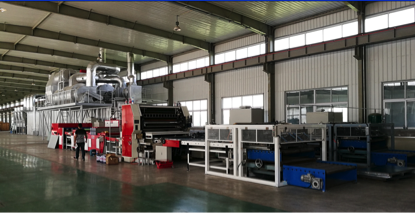
Steel drum printing
3. Petrochemical industry
The production facilities in the petrochemical industry are complex, and therefore, there are many pollutants discharged, complex components, and large concentration changes. Pollutant emissions from the petrochemical industry are classified into unorganized emissions and organized continuous emissions.
The organized emissions of VOCs in the petrochemical industry are primarily anthropogenic emissions from the production process. The organic waste gas generated by the process cannot be completely recycled. Although it is treated by incineration, adsorption, condensation, etc., some organic tail gas is still discharged into the atmosphere. It mainly includes three types of catalytic cracking catalyst regeneration flue gas, acid gas recovery unit exhaust gas, and organic waste gas collection and treatment device exhaust.
Unorganized emissions are an important way of discharging VOCs in the petrochemical industry. There are three main sources: 1 there are different levels of leakage and anthropogenic emissions during production, storage and transportation. 2 In the open space of wastewater collection and treatment system, VOCs temporarily dissolved in wastewater will re-dissipate and volatilize into the atmosphere to have a secondary impact on the environment. 3 VOCs are also produced by the escape of light oils and volatile chemicals and solvents during storage.
According to the typical characteristics of the petrochemical industry, the control of VOCs should first focus on the collection of unorganized emissions. In general, multi-stage technology is used in series, and integrated condensing, membrane and adsorption recovery processes can achieve milligram-level technical standards.
At present, organized emissions can be disposed of in the end treatment, while unorganized emissions are difficult to control. End treatment has insurmountable disadvantages. For example, changes in wind direction can also affect the control of VOCs. Therefore, the focus of control of VOCs is to start from the source and start with the production process.
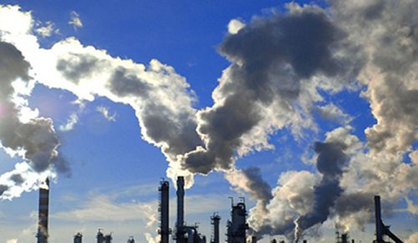
Petrochemical
Second, domestic and foreign VOCs control technology comparison
As far as the control technology of VOCs is concerned, China's mainstream technologies include adsorption recovery, catalytic oxidation, and thermal storage combustion. These technologies are also the mainstream VOCs governance technology in the world.
However, due to the late start of research on VOCs in China, especially the results based on long-term observations are not enough. Although the governance technology has been in line with international standards, the investment in VOCs is not enough. The development of domestic equipment cannot keep up with the demand of technology. Materials and equipment are excessively low-cost and generally inefficient; while foreign countries choose efficient and reasonable advanced materials and equipment. Compared with foreign VOCs governance, China's gap is mainly reflected in the following aspects:
First, most of the instruments used to monitor VOCs use foreign products, which are expensive, and the core monitoring equipment has not yet reached localization. Although some research institutes and enterprises in China have done some research on Fourier spectroscopy, online chromatography and online mass spectrometry, some applications have been carried out. However, in general, there is no systematic VOCs online monitoring technology, and there is no complete set. Application demonstrations, VOCs online monitoring technology for stable operation and reliability of accurate testing require more verification. In addition, there are few applications for VOCs monitoring process control.
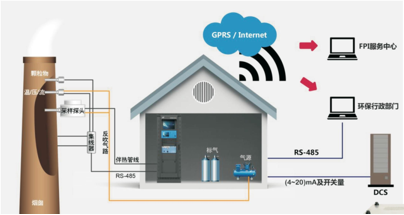
VOCs online monitoring system
Second, there are many kinds of VOCs. The polluting industries and processes involved are numerous, and the emission of polluting gases varies greatly. The above properties determine that a single treatment technology cannot meet the requirements of all exhaust gas treatment. Multi-stage series combined depth technology is widely used in foreign countries, such as adsorption concentration-catalysis (heat storage catalysis), oxidation integration technology, adsorption concentration-condensation recovery integration technology, adsorption concentration-absorption integration technology. In contrast, domestic governance technologies are not so rich, and the application of activated carbon adsorption alone is large.
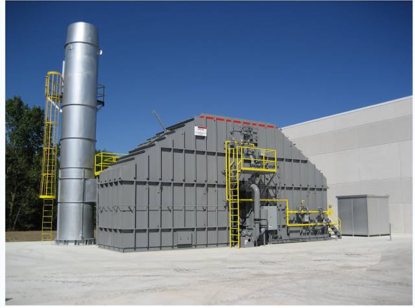
Regenerative incinerator (RTO)
Third, from the application of a certain technology, such as adsorption technology, due to the low cost of activated carbon, widely used in the country, and foreign countries have long used the molecular sieve wheel to concentrate the wheel adsorption, compared with the honeycomb activated carbon fixed bed device has material life Long, high operational stability, high adsorption efficiency, low maintenance costs, safety and reliability. In the treatment of VOCs by combustion, whether it is regenerative thermal combustion or regenerative catalytic combustion, the three-bed RTO/RCO is generally used abroad, and the domestic two-bed type is mainly used. The three-bed regenerative combustion unit has a treatment efficiency of more than 98%, and the two-bed treatment efficiency is 90% to 95%.
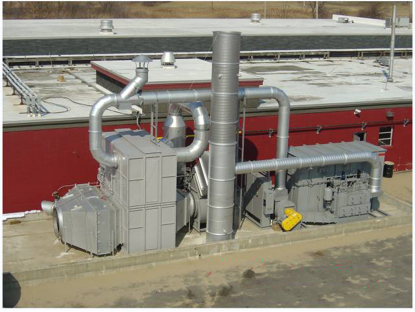
Concentrated runner incinerator
In addition to the technical level, there are also gaps in the use of materials and equipment at home and abroad. For example, the absorbents used in China are generally water, while the foreign ones are high-efficiency, low-volatility and targeted absorbents. Foreign materials and equipment have been refined and specialized in terms of variety, specifications and size. In contrast, there is a lack of targeted abuse in domestic application of management equipment. At present, the national level and the industry have attached great importance to these issues. I believe that with the improvement of VOCs governance requirements and increased investment in governance, China will usher in equipment upgrades and technology upgrades in the field of VOCs governance.
Bi-fold Blow Molded Folding Table is the perfect table for any event. Molded from HDPE, a premium resin material that withstands all weather seasons, making the table suitable for indoor and outdoor use.

Additionally, this table features a powder-coated, all-steel frame making it durable and long-lasting. This deluxe folding table folds in the center, locks closed, and features a comfortable handle for easy transport and storage.
Bi-Fold Tables,Bi Fold Folding Table,Bi Fold Table 6Ft,6Ft Bifold Table,Bi-Fold Table
jiangsu concentric internatinal ltd , https://www.jsconcentriccorp.com